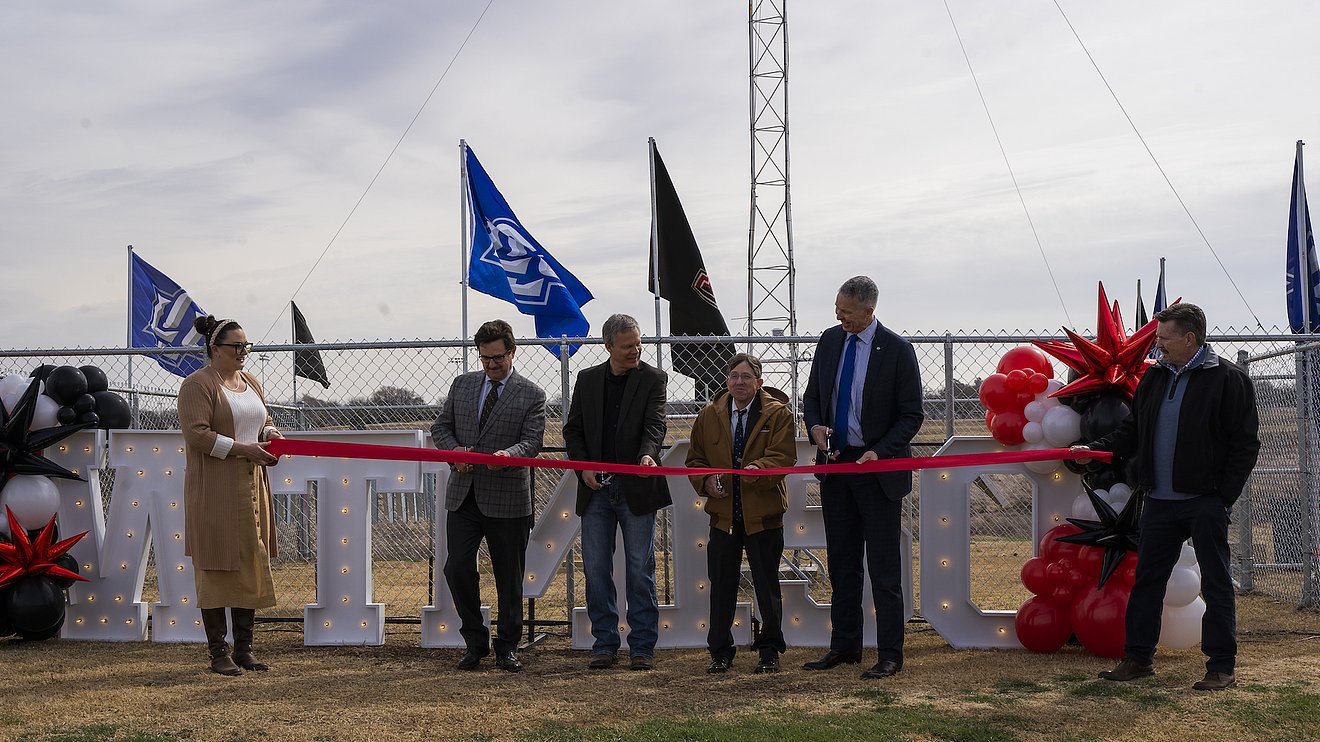The West Texas Mesonet added the Lubbock Christian University station more than 20 years after its first site was installed.
A joint venture in 1999 between the Texas Department of Economic Development and Texas Tech University’s National Wind Institute (NWI) created the West Texas Mesonet (WTM), and almost a quarter century after installing the first weather monitoring site, NWI in conjunction with Lubbock Christian University (LCU) has station 150 up and running.
The new station is located near Frankford Avenue and 27th Street, the site of the former LCU golf course.
“Lubbock Christian University is thrilled to have the opportunity to partner with Texas Tech and the National Wind Institute to serve the people of Lubbock with this 150th weather monitoring station,” said Scott McDowell, President of LCU. “West Texas people are problem solvers by nature, and we solve more problems when we collaborate than when we try to go it alone—the mesonet network is proof positive of that fact.”
Just two years ago, the WTM installed station 135 at the South Plains Food Bank. Now, another milestone is reached in the quest to provide researchers, forecasters, and individuals in the agriculture industry the most complete weather data.
“We’ve survived limited funding and limited staff through building partnerships in every phase of this project,” said NWI senior director John Schroeder. “Those partnerships are exceedingly valuable to continued growth and maintenance of the network.”
The mesonet sites monitor 29 different parameters to aid in the evaluation of weather conditions such as temperature, wind, relative humidity, rainfall, soil temperature, soil moisture, solar radiation, barometric pressure, and more.
Thanks to data provided by the mesonet stations, meteorologists, like those at the National Weather Service (NWS), can more accurately develop forecasts and better inform the public.
“The word 'gamechanger' is probably overused, but that's what the WTM has been to weather operations in West Texas, a gamechanger,” said Justin Weaver, instructor in Atmospheric Science and meteorologist-in-charge at NWS. “With the WTM, we now have numerous stations 30 miles or less apart reporting weather parameters every minute. These high quality, timely observations allow the NWS to accurately diagnose the atmosphere in order to produce higher-quality forecasts and provide us with real-time data during life-threatening weather conditions so we can more accurately warn the public in a timelier manner.”
As both Weaver and Schroeder pointed out, weather intel has become an essential part of life on the South Plains as it by helping residents and industry leader better respond to ever-changing weather conditions.
“The network has been woven into the fabric of life in West Texas,” Schroeder said. “It impacts energy, transportation, emergency management, research and much more. It's probably one of the biggest community service projects we have at Texas Tech.”
Each mesonet site costs close to $25,000 to install which also includes various recurring fees for maintenance and communications.
